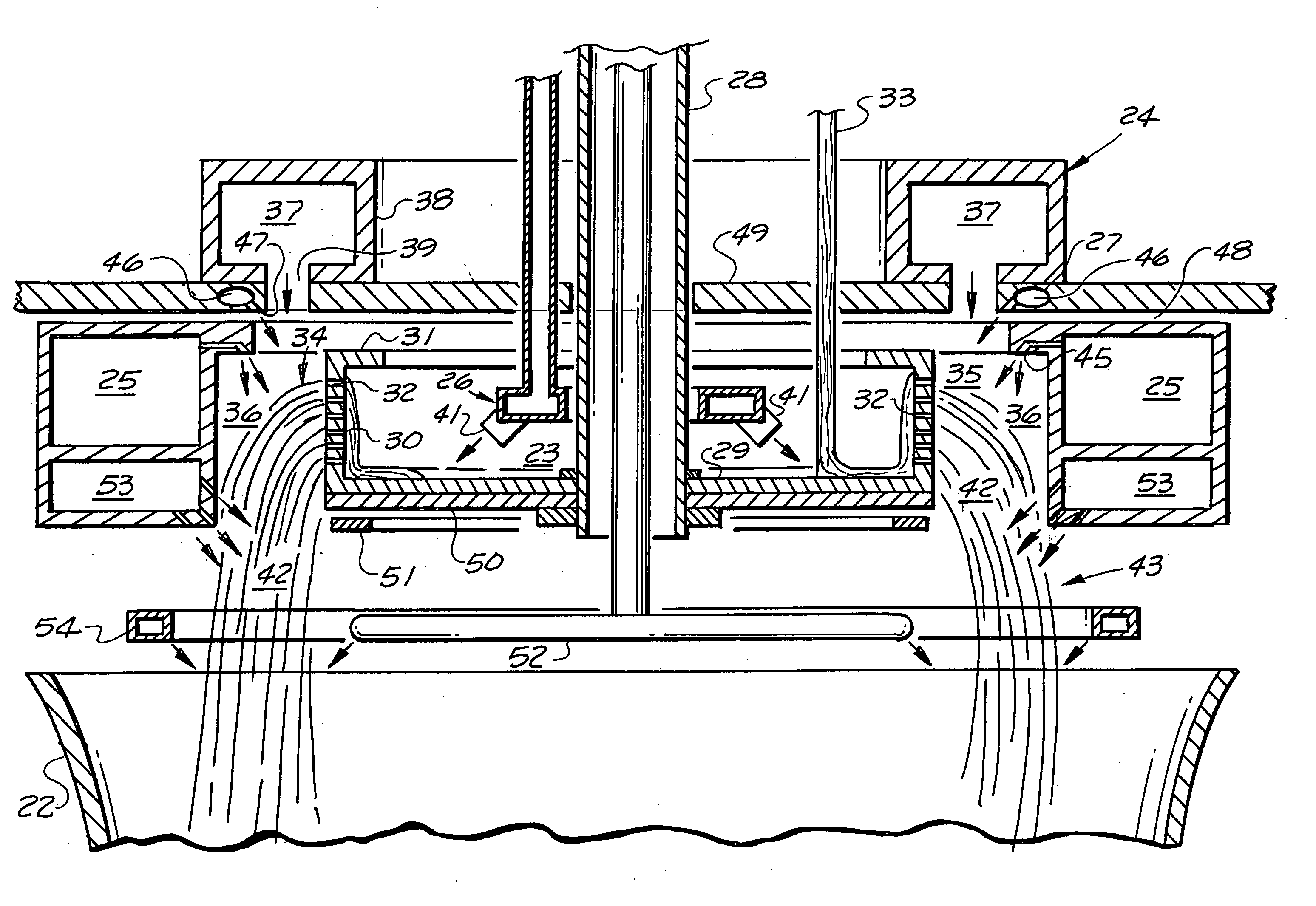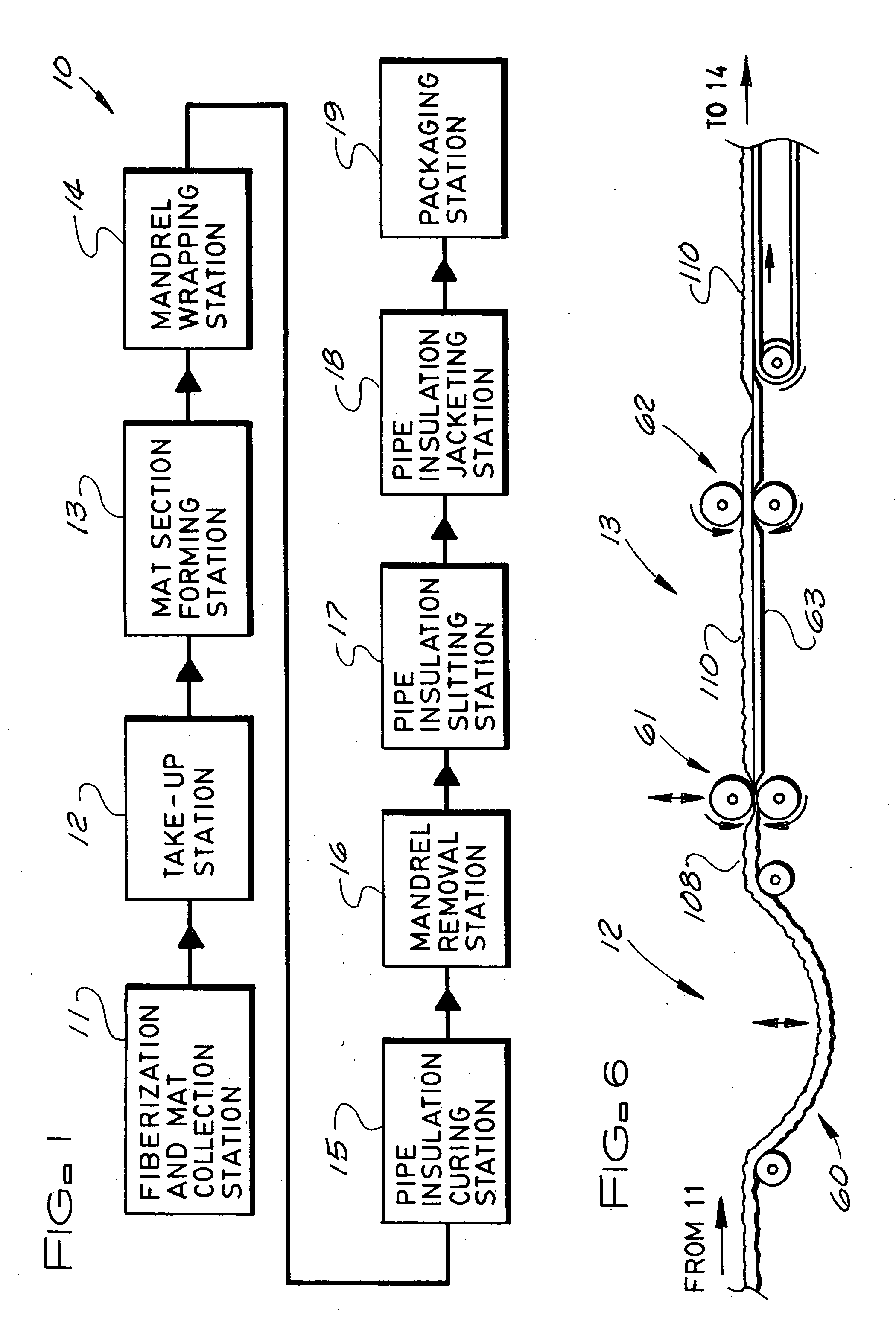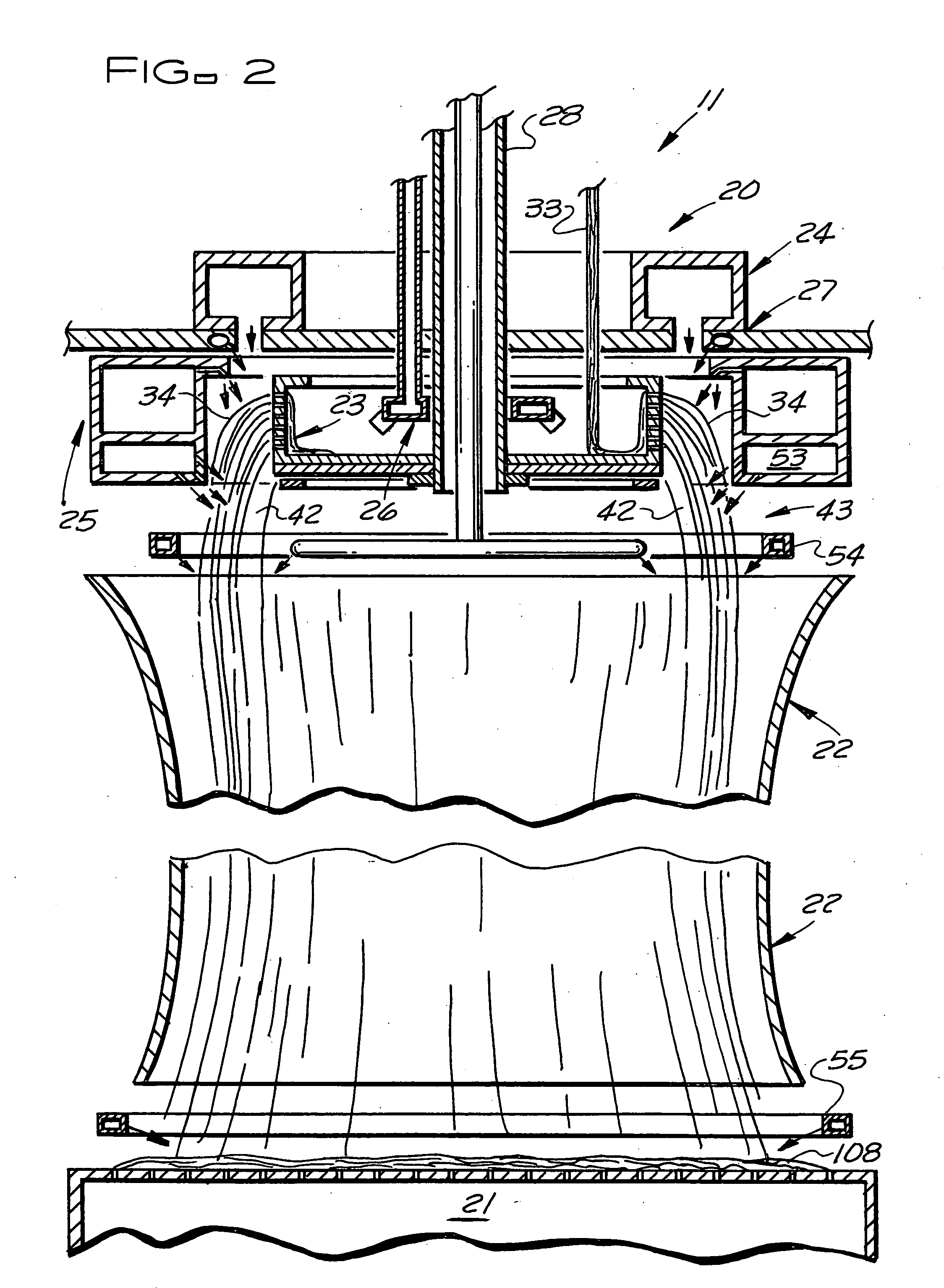Rotary fiberization process for making glass fibers, an insulation mat, and pipe insulation
a technology of rotary fiberization and glass fiber, which is applied in the field of tubular glass fiber pipe insulation making process, can solve the problems of increasing the difficulty of maintaining the energy balance required by the process to produce such glass fiber, increasing the energy required for centrifuge the molten glass fiber into fibers, and reducing the size and length. , the effect of high localized temperature increas
- Summary
- Abstract
- Description
- Claims
- Application Information
AI Technical Summary
Benefits of technology
Problems solved by technology
Method used
Image
Examples
Embodiment Construction
[0021]FIG. 1 schematically shows a jacketed pipe insulation production line 10 for making jacketed tubular pipe insulation assemblies by the process of the subject invention. The jacketed pipe insulation production line 10 includes a glass fiberizing and mat collection station 11, a mat take-up station 12, a mat section forming station 13, a mandrel wrapping station 14, a curing station 15, a mandrel removal station 16, a pipe insulation slitting station 17, a pipe insulation jacketing station 18, and a packaging station 19.
[0022] In a preferred embodiment of the glass fiberizing and mat collection station 11 shown in FIG. 2, the glass fiberizing and mat collection station includes a rotary fiberizing apparatus 20, a rotary perforated mat collection drum 21, and a forming tube 22 through which the fibers formed by the rotary fiberizing apparatus 20 pass to be collected on the rotary mat collection drum 21. The rotary fiberizing apparatus 20 includes a spinner disc 23, an external b...
PUM
| Property | Measurement | Unit |
|---|---|---|
| diameter | aaaaa | aaaaa |
| diameter | aaaaa | aaaaa |
| viscosity | aaaaa | aaaaa |
Abstract
Description
Claims
Application Information
 Login to View More
Login to View More - R&D
- Intellectual Property
- Life Sciences
- Materials
- Tech Scout
- Unparalleled Data Quality
- Higher Quality Content
- 60% Fewer Hallucinations
Browse by: Latest US Patents, China's latest patents, Technical Efficacy Thesaurus, Application Domain, Technology Topic, Popular Technical Reports.
© 2025 PatSnap. All rights reserved.Legal|Privacy policy|Modern Slavery Act Transparency Statement|Sitemap|About US| Contact US: help@patsnap.com



